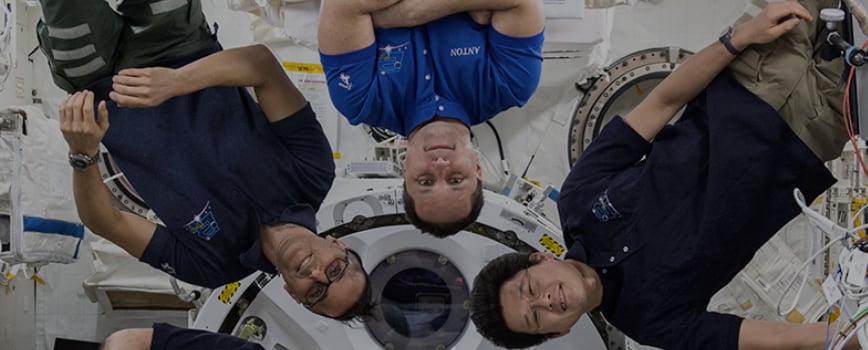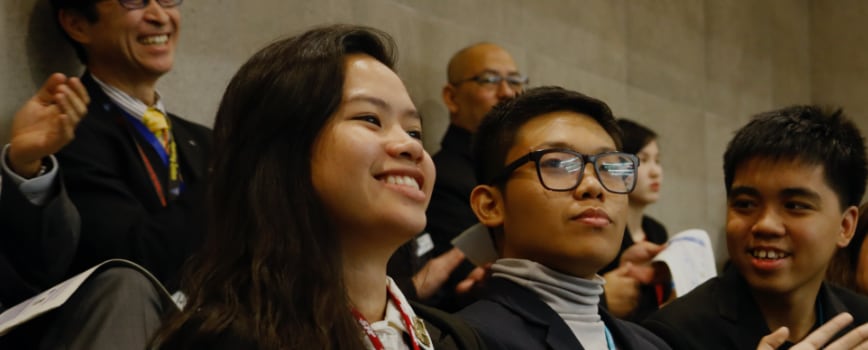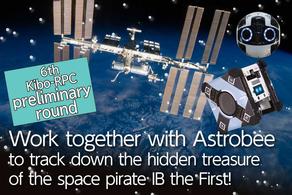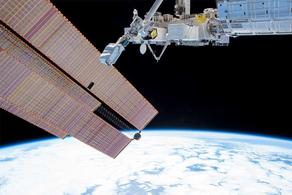2023.04.04
- Announcements
Asian Try Zero - G 2022 Space Experiments Performed!
- Experiment at Kibo
- Kibo Utilization Office for Asia (KUOA)
On January 17, 2023, astronaut Koichi WAKATA of the Japan Aerospace Exploration Agency (JAXA) conducted an event: The Asian Try Zero-G 2022 on Japanese experimente module “Kibo”. This event was based on 480 students and 201 submissions from different Asian countries and regions - six experiments were chosen to take place in space. Students whose experiments were selected watched closely the experiments conducted onboard from JAXA Tsukuba Space Center and online.
Observing Onboard Experiments
Nine experiment proposers from Japan, Singapore, Taiwan, Thailand, and three escorts, visited JAXA Tsukuba Space Center on January 17, 2023. Despite the ongoing global pandemic, it was the first time in about five years that they could gather and observe experiments at the Tsukuba Space Center. In addition, the students from the Philippines joined the event online.
The participants took a tour to see the site where the Kibo space robot is being developed and the space experiment equipment for ground tests. They also visited the exhibition hall (Space Dome), where rockets, satellites, and a model of Kibo were displayed.
For orientation before the space experiments starts, each proposer gave a presentation on their experiment, followed by a Q&A session.
Shortly after the orientation, the participants moved to a special room where they had a view of the Mission Control Room (MCR). They had a valuable experience of observing the experiments conducted by Astronaut WAKATA on Kibo and the real-time operations of the MCR by the controllers.
Shortly after the orientation, the participants moved to a special room where they had a view of the Mission Control Room (MCR). They had a valuable experience of observing the experiments conducted by Astronaut WAKATA on Kibo and the real-time operations of the MCR by the controllers.
Experiment schedule of the day
| Details | Country/Region | |
| 1 | Preparation for on-orbit set-ups, etc. by Astronaut WAKATA | |
| 2 | Opening Remarks by Astronaut WAKATA | |
| 3 | Rotation of ‘Dumbbell-shaped’ objects in Space | Philippines |
| 4 | The Water Vortex in Zero Gravity Condition | Taiwan |
| 5 | Double Pendulum in space | Singapore |
| 6 | Self-assembly of granular gas and three-dimensional pattern formation in a microgravity environment | Japan |
| 7 | Study of the height of water which is risen up in microgravity | Thailand |
| 8 | Water sphere disturbance in zero gravity | Thailand |
| 9 | Closing Remarks by Astronaut WAKATA | |
| 10 | Cleanup by Astronaut WAKATA |






Space Experiments
The first on-orbit experiment was proposed from the Philippines. From start to finish, the proposer watched online and was thrilled to see the experiment being carried out.
In the next experiment proposed from Taiwan, a bottle containing water and bubbles was rotated to observe the inside of the bottle. Then Astronaut WAKATA shined a light from below on the bottle and awed everyone with its stunning beauty.
In Singapore proposed experiment, Astronaut WAKATA performed the experiment in Kibo using tools built by the proposer. Despite high hopes, their effort yielded unexpected results - leaving them with joyous delight and crushing disappointment.
The proposed experiment from Japan used two high-definition cameras and was able to capture images under different experimental conditions.
The experiment on Thailand's capillary phenomenon showed an unexpected result that could overturn existing beliefs. We can't wait to see how the proposer interprets and explains these results.
In another proposed experiment from Thailand, various materials were hit by a water sphere created under microgravity, and unexpected and exciting phenomena were observed. Analysis of the proposer's observation results is underway, and the results will be revealed at a debriefing session in March 2023.
The details of the proposed experiments are available here.






After all experiments were completed, Astronaut WAKATA expressed his gratitude to the students and participating institutions from Asian countries and regions who applied for this program.
Afterward, photos of all desired applicants were displayed on a computer screen in orbit, and Astronaut WAKATA stood with them for a group photo session.
Afterward, photos of all desired applicants were displayed on a computer screen in orbit, and Astronaut WAKATA stood with them for a group photo session.
Closing remarks by Astronaut WAKATA
Time flies so fast as we have reached the end of Asian Try Zero-Z 2022. It was interesting to see how the various objects behaved, especially under microgravity. I look forward to hearing the analysis of the experiments done by the students. Asian Try Zero-G aims to foster youth and young scientists. We plan to hold it in the next year again. The next challenger could be you! See you later!

Unless specified otherwise, rights to all images belong to ©JAXA









